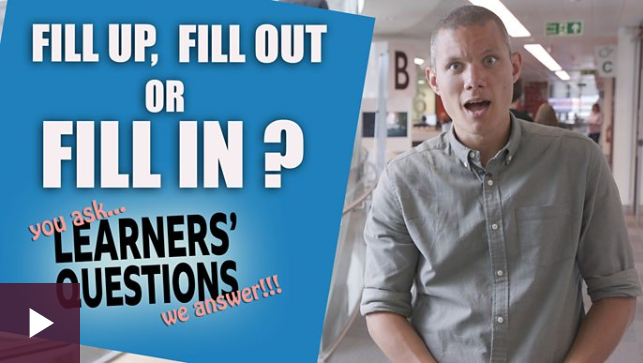This week’s question
What’s the difference between ‘fill up’, ‘fill out’ and ‘fill in’? – Ailin maria (YouTube)
Answer this
Which of these verbs is able to replace the other two in certain contexts?
Language points
Phrasal verbs
Fill out, fill in and fill up are phrasal verbs. That’s a verb + a particle (a preposition or an adverb). All three use ‘fill’, which means ‘put something in an empty space’.
Fill up
Fill up can mean ‘make something become full’.
- I filled the car up with fuel.
- There’s plenty of food. Fill yourself up.
Fill out
Fill out often means ‘complete a form or document’, usually one where spaces have been provided for you write in.
- If you want to join the gym, please fill out this form.
- A person can also fill out. This means they become larger or thicker.
- After three months at the gym, John had really filled out.
Fill in
Fill in, just like fill up, can mean ‘make something full’.
- The council filled in a hole in the road.
Fill in, just like fill out, can mean ‘complete a form or document’.
- If you want to join the gym, please fill in this form.
Fill in can mean ‘temporarily replace someone who is unable to do their job at that time’. We fill in for someone.
- Elena is sick today. Could you please fill in for her?
A person can fill somebody in on something. This means ‘tell them information that they are missing or don’t know’.
- Elena! You’re back. Let me fill you in on what you missed while you were sick.
The answer
Which of these verbs is able to replace the other two in certain contexts?
Fill in. Fill in, just like fill up, can mean ‘make something full’. Fill in, just like fill out, can mean ‘complete a form or document’.
